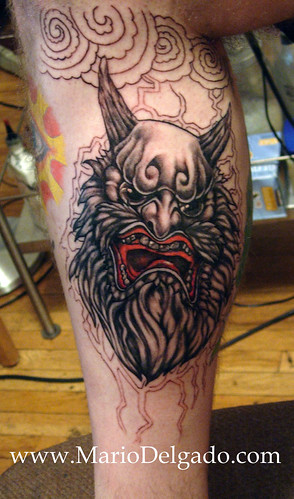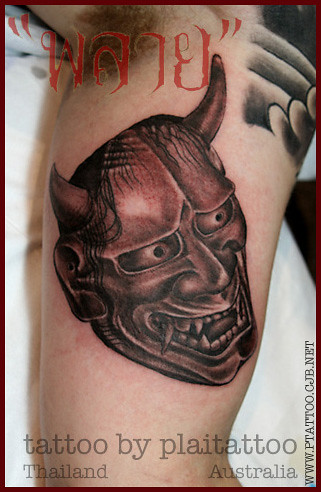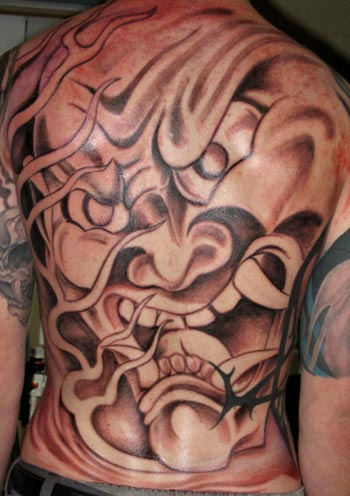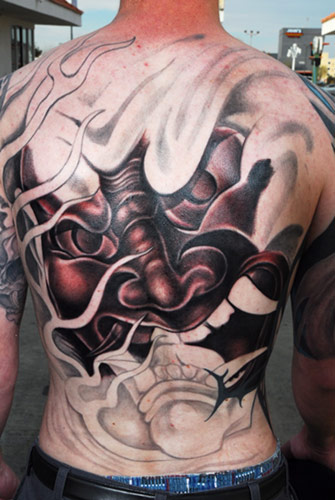One of the popularjapanese tattoos is a Kiyo Heme. The best known story of a Hannya demon is the one from Kiyo Hime. Her father owned a harborage in which a monk stopped each year. Over the years Kiyo Hime developed a deep love to the monk but her feelings could not be returned by him. One night Kiyo Hime confessed her love to him and it came to a controversy between the two of them and in which process Kiyo Hime enraged and the monk had to escape. He found shelter in a close monastery and hid himself under an enormous bell. In the meantime, in the intoxication of its hate love, Kiyo Hime had transformed into a demon with the body of a snake and a Hannya head. It sought out th? monks hiding place and melted the bell with its fire breath, thereby causing the object of its longing a painful death. Like a Hanya Mask, Kiyo Hime is the most popular japanese tattoos in the world.






